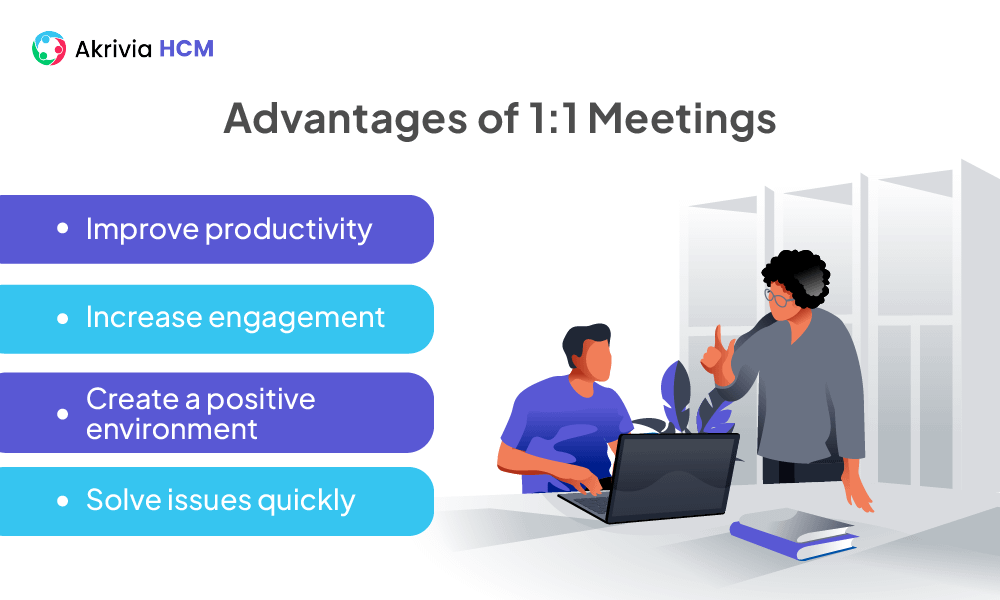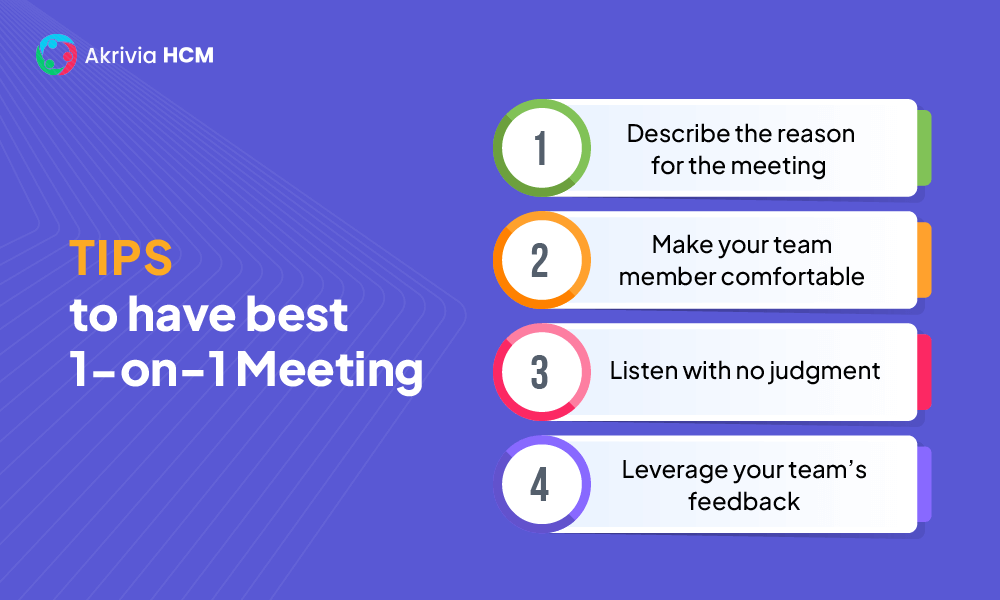Table of Contents
Managers often hesitate to regularly sit down with their employees for one-on-one meetings because of time commitments. Still, this is important for building a trustworthy relationship between manager and employee and providing a good employee experience; let’s dive deep to know the benefits and tips for a perfect 1 on 1 meeting.
The process of One on One meetings between manager and employee in the organisation. Usually, the manager and employee discuss or evaluate the working progress, feedback and plan of action activities.
In the evaluation process, It is a more satisfactory alternative for the manager to build a professional relationship with the employee. In these one-on-one meetings, employees share their thoughts, strategies, and regular work progress. It also helps in the improvement of the performance appraisal process. Regular one-on-one meetings evolve the employee experience. In addition to that, it s a more imperative method for tracking performance evaluation.

Everybody knows that 1 on 1 meeting boosts the morale of team members, but it also benefits in various ways; let’s explore them:

As mentioned above, the 1-on-1 meeting benefits a lot, but constructing a productive framework for it is challenging. To make it successful, you can use these tips, which not only help you in understanding your team members but also in the performance evaluation process:
Prepare the entire meeting structure ahead: To set the stage for a productive one on one meeting, you must ensure everything is in place before it starts. Help the employee understand that you are there to listen, discuss their plans and ask questions. Create talking points in advance so you remember to recognize good work when needed.
Describe the reason for the meeting: 1:1 meetings are a great way to get on the same page and open up opportunities for feedback. Set up a 1:1 with an employee to discuss what they’d like to accomplish and identify areas for improvement.
Make your team member comfortable: Good leaders know that the quality of their team is an essential part of their business. The 1 on 1 meeting aims to get insight into how your employees feel and perform so that you can coach them through any issues early before they become more significant.
Listen with no judgment:1:1 meetings are designed to be one-on-one with each employee. This is a time to find out more about where they are in their career and what they would like to accomplish personally in the next year. Listening to your colleagues is the best way to find out this information. Instead of judging them, actively engage in what they have to say.
Leverage your team’s feedback: This is a crucial step in developing your managerial skills. By listening to what your team members say, you’ll be better equipped to identify recurring patterns from conversations and modify your executive style accordingly.
These few factors should be always addressed in 1 on 1 meetings:
OKRs and Goals:
When the team goals are clearly communicated and understood, individual team member plans can become less critical. But this is not always the case, particularly in times of rapid change. And even when it seems like everyone is on track with their OKRs, 1:1 meetings allow you to check in on team members individually. Having conversations will help each self-evaluation and track their objectives within the greater context of team success.
Performance review:
A productive 1:1 is a collaboration between the manager and employee to discuss performance review, strategic goals, and development which ultimately leads to better results. You must ask the feedback from your team members to know how well you are managing?
Employee recognition:
It is important to appreciate the work of your team members, and to reflect their value in the team. Having 1:1 meetings with employees helps build trust and communication between managers and staff. Plus, showing appreciation through praise motivates employees to continue their hard work. It is an excellent way for employee recognition.
Performance development:
Having a one-on-one meeting with your reports is a great way to get feedback on how they think the company is going. But it’s also an opportunity for them to learn about their development and for you to help guide them in the right direction. If you feel like an employee has potential in a particular area but is not currently getting there, learn more about what they need to do next, and help them find the resources they need to succeed.
Scheduling meetings with everyone individually in the team might not be possible for you; if you have a bigger group, it may take a lot of time to make up their schedule. The performance management system helps you in this case as well; to create a proper work schedule with minimum effort.
Let’s Recruit, Reward, and Retain
Your Workforce Together!
